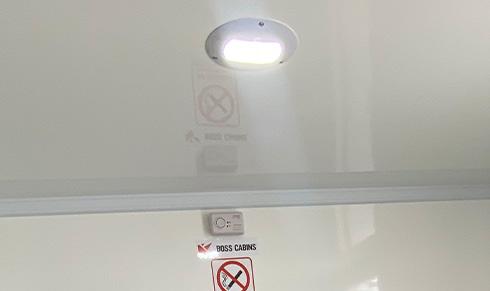
6 minute read
5.3 Using the Electrical Equipment
Your Deep Green welfare cabin is equipped with various items of electrical equipment. Here we explain how to use each one in conjunction with the SOLARFlowTM electrical system.
5.3.1 24V LED LIGHTING
Advertisement
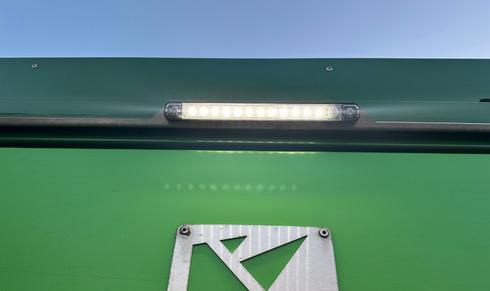
The cabin is fitted as standard with 24V LED ceiling lights which run off battery power. The Hibernation switch must be in the ON position for all LED lights to function.
All 24V LED ceiling lights in the Canteen, Office, Toilets and Drying areas are operated via PIR sensor so there is no need to switch on, they will come on automatically as someone enters the room and switch off again after they leave. If you are sitting still and the lights go out, simply make a movement and the sensor will detect it and the lights will come back on again.
There are also exterior PIR-sensor activated 24V LED lights above the Canteen, Office and Toilet doors to improve visibility in low light conditions on site and help avoid trip hazards which come on when someone steps near the cabin. As well as a PIR-sensor, these lights incoporate a daylight-sensor so will only operate in dark or low-light conditions.
In order that these lights do not come on while transporting the cabin and cause a road hazard, it is essential to turn the Hibernation Switch to the OFF position before the cabin is moved.
5.3.2 WATER STERILISATION SYSTEM

In order to protect the planet’s water resources, this Deep Green cabin incorporates a patented rain water harvesting and grey water recycling system, Waste Management ProTM. Rain water is harvested from the roof, sieved for debris and fine particles before being sterilised in one of several ways dependent on the model of your cabin.

Type A - LED UV sterilisation. If your cabin is fitted with an LED UV sterilisation unit, this functions completely automatically and you do not need to turn on an isolator. Type B - Non-LED UV sterilisation. If your cabin has a non-LED sterilisation system there will be an isolator in the Office (20ft and 24ft), or it will be located under one of the benches towards the rear of the canteen (12ft and 16ft). This should be turned on at all times when water might be used.
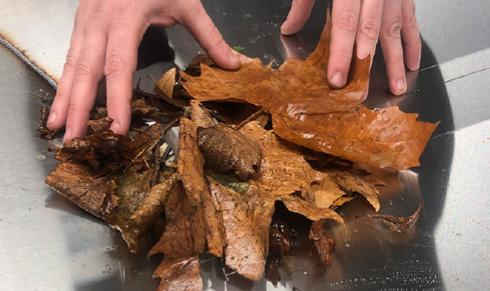
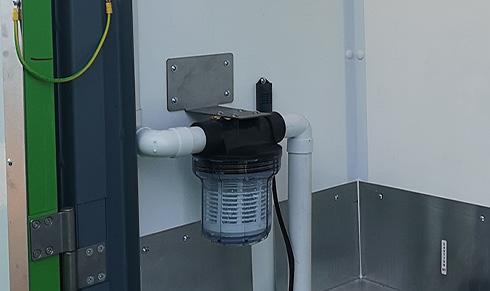
The rain water drain should be checked regularly for obstructions such as fallen leaves or other debris. Clear any obstructions and dispose of them. The particle filter found should also be cleaned and the filter replaced regularly by an authorised service engineer. Depending on model, this is located either in the Drying room, the toilet cubicle or under the sink in the toilet. Type C - Chlorine sterilisation. Some models are fitted with a chlorine sterilisation system. Please insert a chlorine tab into the entry point shown. When the chlorine tab has fully dissolved, add another. This should be checked regularly and at every toilet service.
Type D - Micron sterilisation
filter. This sterilises water passing betweeen the fresh water tank and the hot wash units. These filters are located under the desk in the office in the 20ft and 24ft units. In the 12ft and 16ft units, they are located under the sinks in the toilets. The micron filter cartridge should be changed every 12 months. For more details, refer to the manufacturer’s instructions.
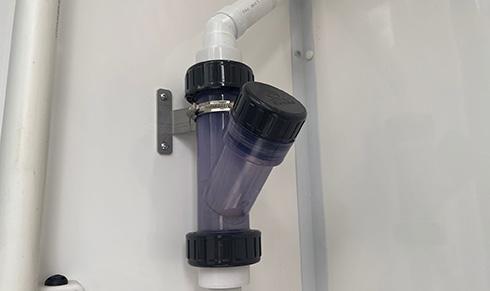
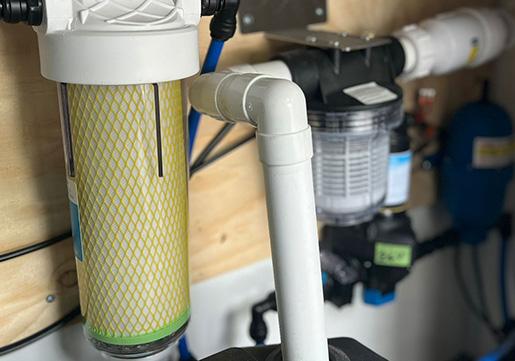
NOTE
For more information on the water sterilisation system, see section 7.2. IMPORTANT
If the bulb in the non-LED UV sterilisation system fails, a warning beep will be emitted from the unit and the green light on the unit will go off. To change the bulb, you must consult the manufacturer’s instructions. Do not open the UV unit before reading the instructions.
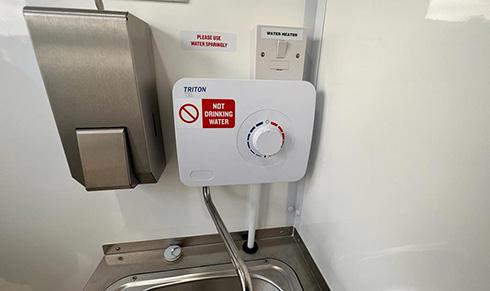
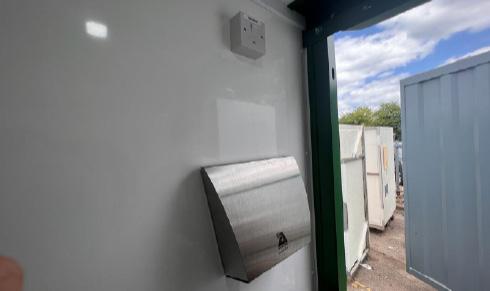
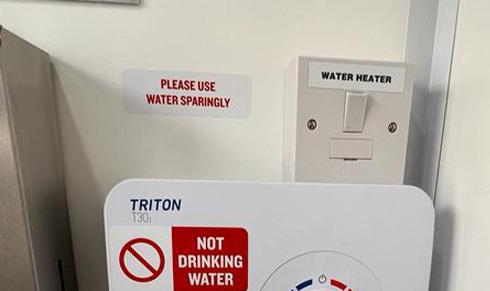
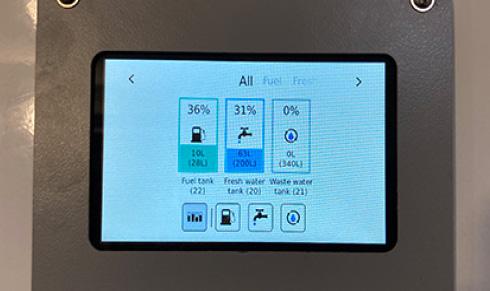
The water for the hand wash sinks comes from the main fresh water tank. After being sterilised it passes to the instant hot wash unit where it is heated on demand. To start the unit, turn the dial to the required temperature. The water is heated instantly and starts to flow. The temperature of the water can be controlled by turning the dial from 1 – Cool to 10 – Hot.
CAUTION: To avoid scalding, always set temperature low to start. To operate the instant hot water hand wash unit, the Hibernation Switch switch must be ON. Make sure the water heater isolator is also switched on. This is located on the wall near the unit. If water does not come out of the taps when pressed, check the water tank level using the gauge in the Canteen. If it is low, fill the water tank.
1
Toilet cubicles are fitted with lowpower hands-free electric hand dryers for hygiene and convenience. To operate the hand dryer, simply place your hands beneath the air outlet and hot air will flow. The hand dryer isolator [1] must be in the ON position for the hand dryer to function.
5.3.4 KITCHEN APPLIANCES
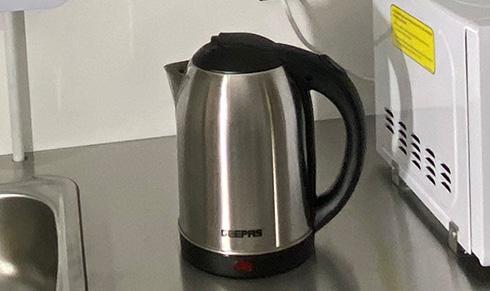
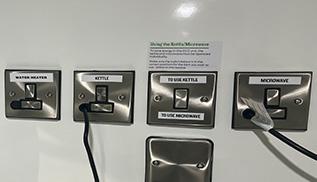
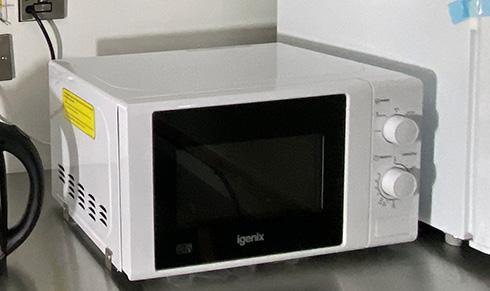
1
The unit’s food preparation area is supplied as standard with a 1500W kettle to make hot drinks and a 700W microwave for hot food preparation. To use these, the Hibernation switch must be ON. These items all have individual wired isolators - make sure these are also in the ON position. For reasons of energy efficiency in this Deep Green unit, the kettle and microwave are operated individually. Before using either one, make sure power is directed correctly using the selector switch [1].
5.3.5 USB CHARGING POINTS
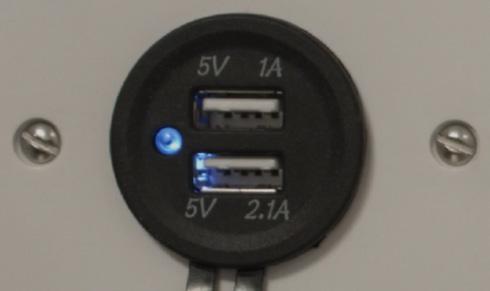
24V USB charging points are provided in the Canteen and Office (if applicable) to enable mobile phones, tablets and notebooks to be charged from the cabin’s battery. The Hibernation switch must be in the ON position to use.
In the Canteen, these USB sockets are located in the wall below the bench seating. In the Office they are found in the plug sockets.
5.3.6 LOW POWER 500W 230V 3-PIN PLUG SOCKETS
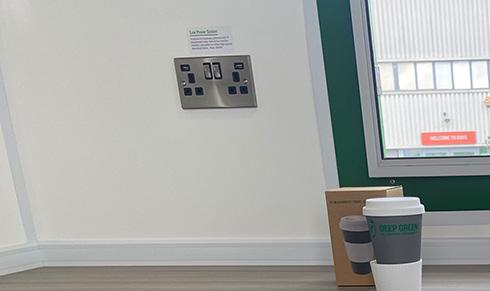
The Deep Green welfare cabin is fitted with low power 500W 3-pin plug sockets in the Canteen and Office (if applicable). These can power 230V devices that do not have a large power consumption, such as laptops, printers and IT equipment only.
These sockets are not designed to be used for heaters, site plant or other high power electrical items. Maximum 500W.
In the Canteen, double 3-pin sockets (if available) are located in the wall below the bench seating. If the unit has an Office, there are double sockets in the wall near the desk.




